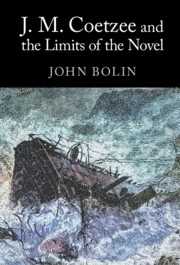
-
Select format
-
- Publisher:
- Cambridge University Press
- Publication date:
- June 2023
- June 2023
- ISBN:
- 9781009179652
- 9781009179645
- Dimensions:
- (229 x 152 mm)
- Weight & Pages:
- 0.51kg, 240 Pages
- Dimensions:
- Weight & Pages:
You may already have access via personal or institutional login
Book description
J. M. Coetzee is widely recognized as one of the most important writers working in English. As a South African (now Australian) novelist composing his best-known works in the latter third of the twentieth century, Coetzee has understandably often been read through the lenses of postcolonial theory and post-war ethics. Yet his reception is entering a new phase bolstered by thousands of pages of new and unpublished empirical evidence housed at the J. M. Coetzee archive at The Harry Ransom Center (University of Texas, Austin). This material provokes a re-reading of Coetzee's project even as it uncovers keys to his process of formal experimentation and compositional evolution up to and including Disgrace (1999). Following Coetzee's false starts, his confrontation of narrative impasses, and his shifting deployment of source materials, J. M. Coetzee and the Limits of the Novel provides a new series of detailed snapshots of one of the world's most celebrated authors.
Contents
Metrics
Full text views
Full text views help Loading metrics...
Loading metrics...
* Views captured on Cambridge Core between #date#. This data will be updated every 24 hours.
Usage data cannot currently be displayed.
Accessibility standard: Unknown
Why this information is here
This section outlines the accessibility features of this content - including support for screen readers, full keyboard navigation and high-contrast display options. This may not be relevant for you.
Accessibility Information
Accessibility compliance for the PDF of this book is currently unknown and may be updated in the future.


